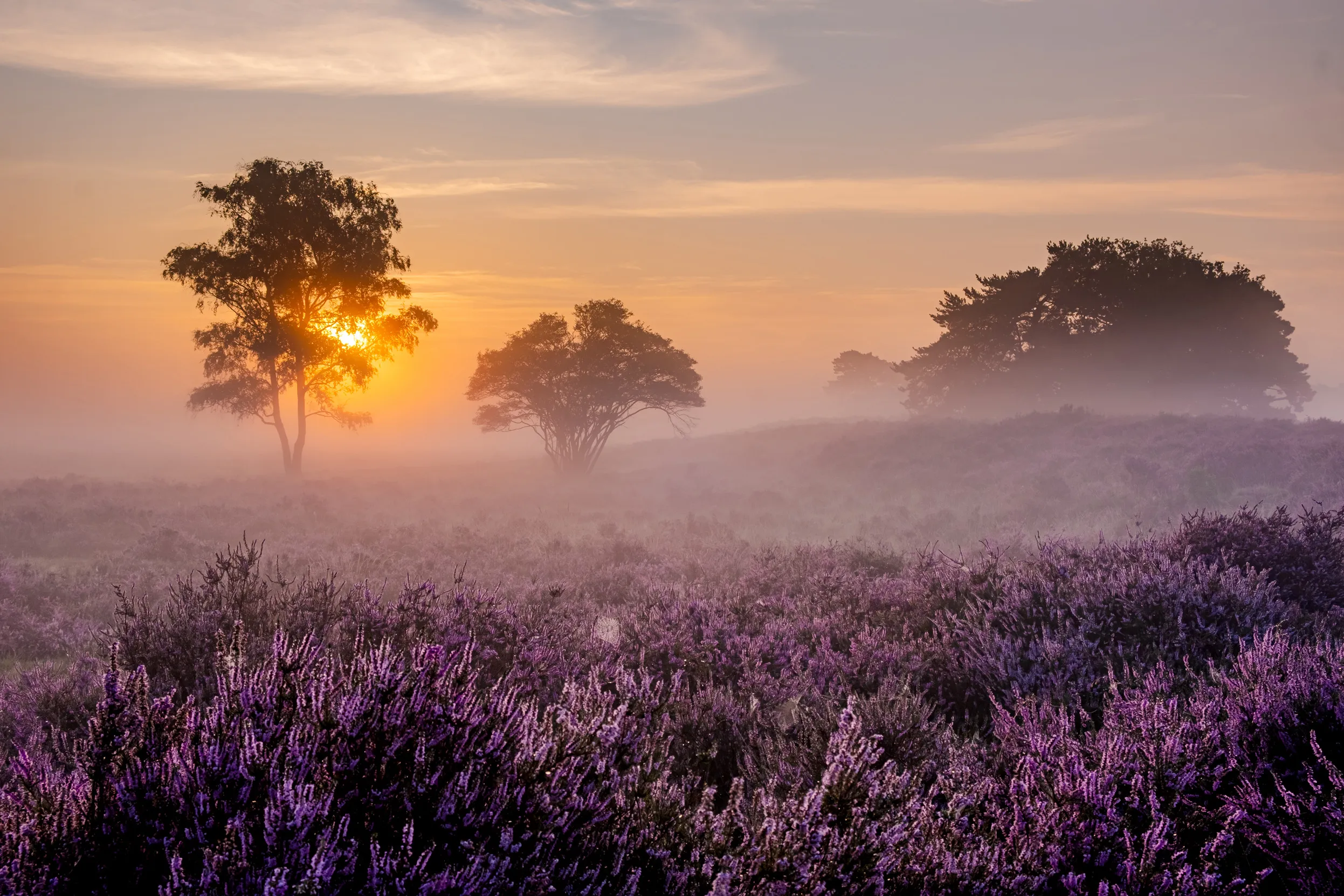Heathland
Heathland is home to some of our rarest and most exciting wildlife, from Smooth snakes and Dartford warblers to Hobbies hunting Dragonflies.

On this page
What is heathland?
Heathlands are open spaces, made up of low-growing plants, like heather, gorse, broom and grasses.
It's a diverse habitat, originally created by humans in the Bronze Age, when they cleared native
woodland for grazing animals.
Now, most heathland is protected by law, and rightly so - heaths are weird and wonderful places with many special birds, insects and plants thriving there.
Heathland wildlife
Heathland is a diverse habitat, creating lots of homes for all kinds of animals, insects, reptiles and
birds.
These special places are the best spots to see certain birds. The Woodlarks' gorgeous, fluting notes drift down from perches, while Dartford warblers and Stonechats scratch away in the heather and gorse.
Stay out late into the night if you want to hear the bizarre, whirring noises that Nightjars make in their courtship displays.
Small is beautiful too. Look closely and you could see an emerald-green Tiger beetle hunting for prey or a silver-studded Blue butterfly on a heathland.
Watch a pond and you might spot Dragonflies and Damselflies, or Natterjack toads (the sand-loving relative of the common toad) if you're lucky.
The heathland plants are also pretty special, with pink and purple heather and rich yellow gorse and broom. Late summer is the time to admire expanses of beautiful blooming purple heather as well as butterflies and other insects.
Heathlands are in trouble
In the 1900s, many people didn't think heathland habitats were useful enough to stay as they were. This meant that lots of heathland was changed into forest, where only one kind of fast-growing tree could live, or farmland, which wasn't suitable for heathland plants and animals.
One fifth of all the lowland heath in Europe is in the UK, but it usually exists in small pockets, surrounded by towns or farms. This means that many plants and animals that live there are trapped. Only one sixth of the old heathland remains in the UK.
Where to visit heathland near you
Our heathland reserves are home to some of Britain's rarest and most exciting wildlife. Enjoy the beautiful colours and scent of heather and gorse on a sunny day, or take a stroll on a summer’s evening to experience the magical sights and sounds of heathland.
Heathland reserves
Top tips for seeing heathland
- Heaths are at their most interesting and colourful in spring and summer
- Visit at dusk on summer evenings if you are hoping to see and hear Nightjars
- Scan the tops of gorse bushes - favourite perching posts for Dartford warblers, Stonechats and other heath birds
- Look in sunny spots for basking reptiles, such as Common lizards